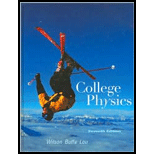
College Physics
7th Edition
ISBN: 9780321601834
Author: Jerry D. Wilson, Anthony J. Buffa, Bo Lou
Publisher: Addison-Wesley
expand_more
expand_more
format_list_bulleted
Concept explainers
Question
Chapter 1, Problem 24CQ
To determine
Whether the given statement is reasonable or not.
Expert Solution & Answer
Want to see the full answer?
Check out a sample textbook solution
Chapter 1 Solutions
College Physics
Ch. 1 - Prob. 1MCQCh. 1 - The only SI standard represented by material...Ch. 1 - Which of the following is the SI base unit for (a)...Ch. 1 - Prob. 4MCQCh. 1 -
The prefix giga- means (a) 10−9, (b) 109, (c)...Ch. 1 - The prefix micro- means (a) 106, (b) 10–6, (c)...Ch. 1 - A new technology is concerned with objects the...Ch. 1 -
Which of the following has the greatest volume:...Ch. 1 - Which of the following metric prefixes is the...Ch. 1 - Both sides of an equation are equal in (a)...
Ch. 1 - Unit analysis of an equation cannot tell you if...Ch. 1 - Prob. 12MCQCh. 1 - Prob. 13MCQCh. 1 - You have a quantity of water and wish to express...Ch. 1 - Which of the following has the greatest number of...Ch. 1 - Which of the following numbers has four...Ch. 1 - Prob. 17MCQCh. 1 - An important step in problem solving before...Ch. 1 - Prob. 19MCQCh. 1 - In order-of-magnitude calculations, you should (a)...Ch. 1 - Prob. 1CQCh. 1 - Why is weight not a base quantity?
Ch. 1 - What replaced the original definition of the...Ch. 1 - Give a couple of major differences between the SI...Ch. 1 - If a fellow student tells you he saw a 3-cm-long...Ch. 1 - Prob. 6CQCh. 1 - Explain why a metric ton is equivalent to 1000...Ch. 1 - Prob. 8CQCh. 1 - Prob. 9CQCh. 1 - Prob. 10CQCh. 1 - Prob. 11CQCh. 1 - Prob. 12CQCh. 1 - Prob. 13CQCh. 1 - Prob. 14CQCh. 1 - Prob. 15CQCh. 1 - Are all the significant figures reported for a...Ch. 1 - Prob. 17CQCh. 1 - Prob. 18CQCh. 1 - What are the main steps in the problem-solving...Ch. 1 - When you do order-of-magnitude calculations,...Ch. 1 - When doing an order-of-magnitude calculation, how...Ch. 1 - Prob. 22CQCh. 1 -
Is the following statement reasonable? It took...Ch. 1 - Is the following statement reasonable? A car...Ch. 1 -
The metric system is a decimal (base-10) system,...Ch. 1 - (a) In the British system, 16 oz = 1 pt and 16 oz...Ch. 1 - Convert the following: (a) 40 000 000 bytes to MB,...Ch. 1 - A sailor tells you that if his ship is traveling...Ch. 1 - Prob. 5ECh. 1 - Prob. 6ECh. 1 - Prob. 7ECh. 1 - Prob. 8ECh. 1 - Prob. 9ECh. 1 - Prob. 10ECh. 1 - The general equation for a parabola is y = ax2 +...Ch. 1 - Prob. 12ECh. 1 - Prob. 13ECh. 1 - Prob. 14ECh. 1 - Is the equation for the area of a trapezoid, ,...Ch. 1 - Newton’s second law of motion (Section 4.3) is...Ch. 1 - Prob. 17ECh. 1 - Prob. 18ECh. 1 - Figure 1.8 (top) shows the elevation of a location...Ch. 1 - (a) If you wanted to express your height with the...Ch. 1 - Prob. 21ECh. 1 - Prob. 22ECh. 1 - Prob. 23ECh. 1 - Prob. 24ECh. 1 - Prob. 25ECh. 1 - Prob. 26ECh. 1 - Prob. 27ECh. 1 - Prob. 28ECh. 1 - (a) Which of the following represents the greatest...Ch. 1 - Prob. 30ECh. 1 - Prob. 31ECh. 1 - Prob. 32ECh. 1 - Prob. 33ECh. 1 - Prob. 34ECh. 1 - Fig. 1.18 is a picture of red blood cells seen...Ch. 1 - A student was 18 in. long when she was born. She...Ch. 1 - How many minutes of arc does the Earth rotate in 1...Ch. 1 - Prob. 38ECh. 1 - The Roman Coliseum used to be flooded with water...Ch. 1 - In the Bible, Noah is instructed to build an ark...Ch. 1 - Express the length 50 500 μm (micrometers) in...Ch. 1 - Prob. 42ECh. 1 - Prob. 43ECh. 1 - Express each of the numbers in Exercise 43 with...Ch. 1 - Round the following numbers to two significant...Ch. 1 - Prob. 46ECh. 1 - Prob. 47ECh. 1 - The interior storage compartment of a restaurant...Ch. 1 - The top of a rectangular table measures 1.245 m by...Ch. 1 - Prob. 50ECh. 1 - Prob. 51ECh. 1 - Prob. 52ECh. 1 - Work this exercise by the two given procedures as...Ch. 1 - Prob. 54ECh. 1 - Prob. 55ECh. 1 - Prob. 56ECh. 1 - Prob. 57ECh. 1 - The thickness of the numbered pages of a textbook...Ch. 1 - The mass of the Earth is 5.98 × 1024 kg. What is...Ch. 1 - To go to a football stadium from your house, you...Ch. 1 - Two chains of length 1.0 m are used to support a...Ch. 1 - Tony’s Pizza Palace sells a medium 9.0-in....Ch. 1 - Two students go into Tony’s Pizza Palace and order...Ch. 1 - In Fig. 1.22, which black region has the greater...Ch. 1 - The Channel Tunnel, or “Chunnel,” which runs under...Ch. 1 - Human adult blood contains, on average, 7000/mm3...Ch. 1 - The average number of hairs on the normal human...Ch. 1 - A car is driven 13 mi east and then a certain...Ch. 1 -
At the Indianapolis 500 time trials, each car...Ch. 1 - Approximately 118 mi wide, 307 mi long, and...Ch. 1 - In the Tour de Franco, a bicyclist races up two...Ch. 1 - A student wants to determine the distance from the...Ch. 1 - A farmer owns a piece of land in the shape of an...Ch. 1 - In a radioactivity experiment, a solid lead brick...Ch. 1 - Approximately 118 mi wide, 307 mi long, and...Ch. 1 - Two separate seismograph stations receive...Ch. 1 - You are sailing a radio-controlled model powerboat...Ch. 1 - Prob. 78E
Knowledge Booster
Learn more about
Need a deep-dive on the concept behind this application? Look no further. Learn more about this topic, physics and related others by exploring similar questions and additional content below.Recommended textbooks for you
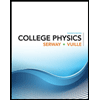 College PhysicsPhysicsISBN:9781305952300Author:Raymond A. Serway, Chris VuillePublisher:Cengage Learning
College PhysicsPhysicsISBN:9781305952300Author:Raymond A. Serway, Chris VuillePublisher:Cengage Learning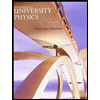 University Physics (14th Edition)PhysicsISBN:9780133969290Author:Hugh D. Young, Roger A. FreedmanPublisher:PEARSON
University Physics (14th Edition)PhysicsISBN:9780133969290Author:Hugh D. Young, Roger A. FreedmanPublisher:PEARSON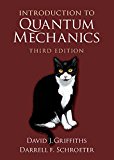 Introduction To Quantum MechanicsPhysicsISBN:9781107189638Author:Griffiths, David J., Schroeter, Darrell F.Publisher:Cambridge University Press
Introduction To Quantum MechanicsPhysicsISBN:9781107189638Author:Griffiths, David J., Schroeter, Darrell F.Publisher:Cambridge University Press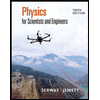 Physics for Scientists and EngineersPhysicsISBN:9781337553278Author:Raymond A. Serway, John W. JewettPublisher:Cengage Learning
Physics for Scientists and EngineersPhysicsISBN:9781337553278Author:Raymond A. Serway, John W. JewettPublisher:Cengage Learning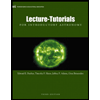 Lecture- Tutorials for Introductory AstronomyPhysicsISBN:9780321820464Author:Edward E. Prather, Tim P. Slater, Jeff P. Adams, Gina BrissendenPublisher:Addison-Wesley
Lecture- Tutorials for Introductory AstronomyPhysicsISBN:9780321820464Author:Edward E. Prather, Tim P. Slater, Jeff P. Adams, Gina BrissendenPublisher:Addison-Wesley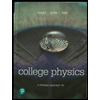 College Physics: A Strategic Approach (4th Editio...PhysicsISBN:9780134609034Author:Randall D. Knight (Professor Emeritus), Brian Jones, Stuart FieldPublisher:PEARSON
College Physics: A Strategic Approach (4th Editio...PhysicsISBN:9780134609034Author:Randall D. Knight (Professor Emeritus), Brian Jones, Stuart FieldPublisher:PEARSON

College Physics
Physics
ISBN:9781305952300
Author:Raymond A. Serway, Chris Vuille
Publisher:Cengage Learning

University Physics (14th Edition)
Physics
ISBN:9780133969290
Author:Hugh D. Young, Roger A. Freedman
Publisher:PEARSON

Introduction To Quantum Mechanics
Physics
ISBN:9781107189638
Author:Griffiths, David J., Schroeter, Darrell F.
Publisher:Cambridge University Press

Physics for Scientists and Engineers
Physics
ISBN:9781337553278
Author:Raymond A. Serway, John W. Jewett
Publisher:Cengage Learning

Lecture- Tutorials for Introductory Astronomy
Physics
ISBN:9780321820464
Author:Edward E. Prather, Tim P. Slater, Jeff P. Adams, Gina Brissenden
Publisher:Addison-Wesley

College Physics: A Strategic Approach (4th Editio...
Physics
ISBN:9780134609034
Author:Randall D. Knight (Professor Emeritus), Brian Jones, Stuart Field
Publisher:PEARSON
Half life | Radioactivity | Physics | FuseSchool; Author: FuseSchool - Global Education;https://www.youtube.com/watch?v=IDkNlU7zKYU;License: Standard YouTube License, CC-BY